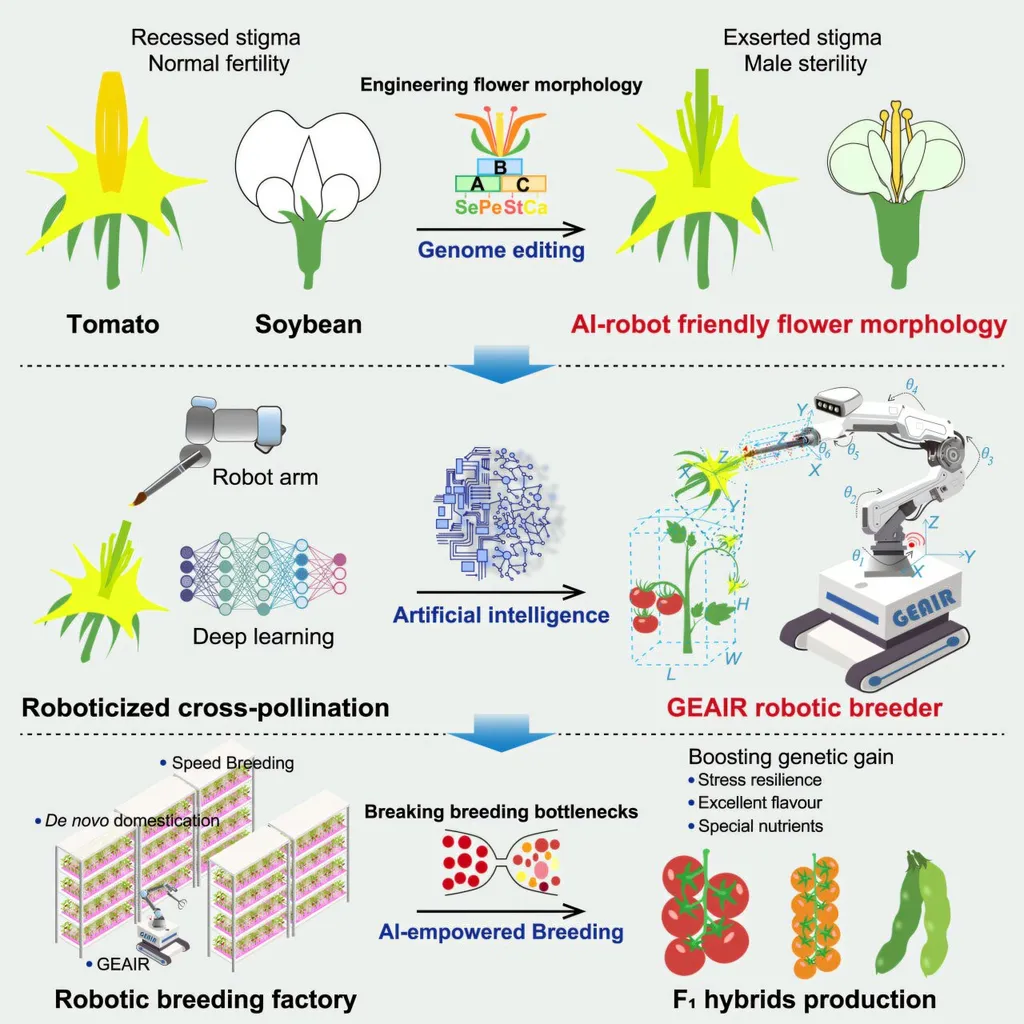In the heart of agricultural innovation, a recent study published in *BMC Plant Biology* has shed light on the genetic mechanisms regulating flowering time in linseed, a crop with diverse industrial applications. The research, led by Ankit Saroha from ICAR-National Bureau of Plant Genetic Resources, delves into the trehalose-6-phosphate synthase (TPS) gene family, offering insights that could revolutionize linseed cultivation and yield optimization.
Flowering time is a critical trait for linseed growers, as it directly impacts seed yield and quality across different agro-ecological zones. By employing comparative genomics and bioinformatics approaches, Saroha and his team identified 18 LuTPS genes in the linseed genome, clustering them into two distinct groups. “Understanding the role of these genes is crucial for developing linseed varieties that can thrive in various environments and meet the demands of the food, nutraceutical, oil, and paint industries,” Saroha explained.
The study revealed that while most TPS genes exhibited basal expression levels, several, including LuTPS6.1, LuTPS6.2, and LuTPS10.1, showed significantly higher expression in developing floral buds and flowers. These genes were also strongly correlated with key flowering-related genes such as FT, FUL, and SOC1. This correlation suggests that TPS genes play a pivotal role in regulating flowering time, a discovery that could pave the way for more precise breeding programs.
Moreover, the researchers identified trait-specific single nucleotide polymorphisms (SNPs) in LuTPS6.1 and LuTPS10.2 by comparing early- and late-flowering linseed accessions. “These SNPs could serve as valuable markers for selecting linseed varieties with desired flowering times, enhancing both yield and adaptability,” Saroha noted.
The study also uncovered several enriched cis-regulatory elements (CREs) in the promoter regions of LuTPS genes, which are crucial for understanding the regulation of these genes in growth, development, and stress response. Additionally, a genome-wide syntenic network analysis involving linseed and nine other plant genomes provided insights into the evolutionary dynamics and expansion of the TPS gene family.
The physical proximity of TPS genes to known flowering time QTLs/QTNs further underscores their potential impact on linseed cultivation. “This research represents a significant step toward understanding the complex genetic regulation of flowering time in linseed,” Saroha concluded.
The implications of this study are far-reaching for the agriculture sector. By elucidating the role of TPS genes in flowering time regulation, researchers and breeders can develop linseed varieties that are more resilient and productive. This could lead to increased yields and improved quality, benefiting farmers and industries alike. As the demand for linseed continues to grow, driven by its applications in food, nutraceuticals, and industrial products, this genetic insight could be a game-changer for the agriculture sector.
In the words of Ankit Saroha, “This study not only advances our understanding of linseed genetics but also opens new avenues for crop improvement and sustainable agriculture.” With these findings, the future of linseed cultivation looks brighter than ever.

